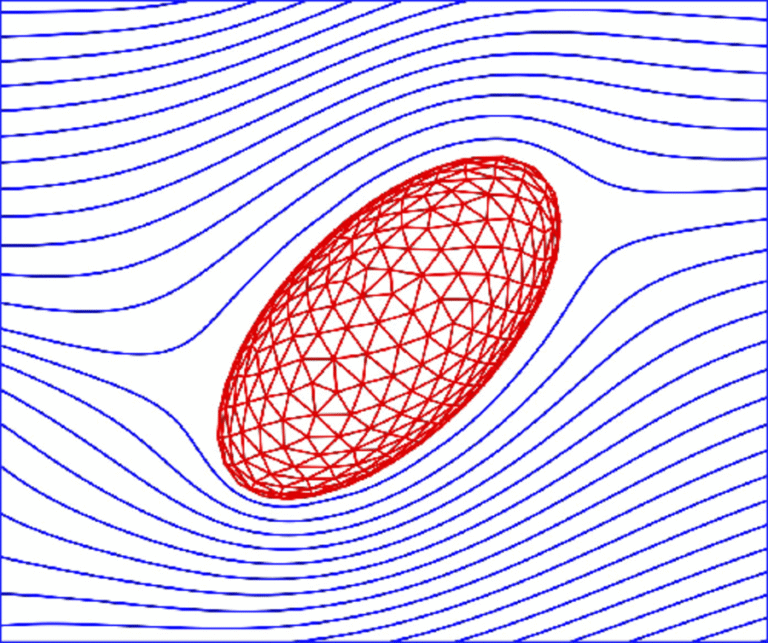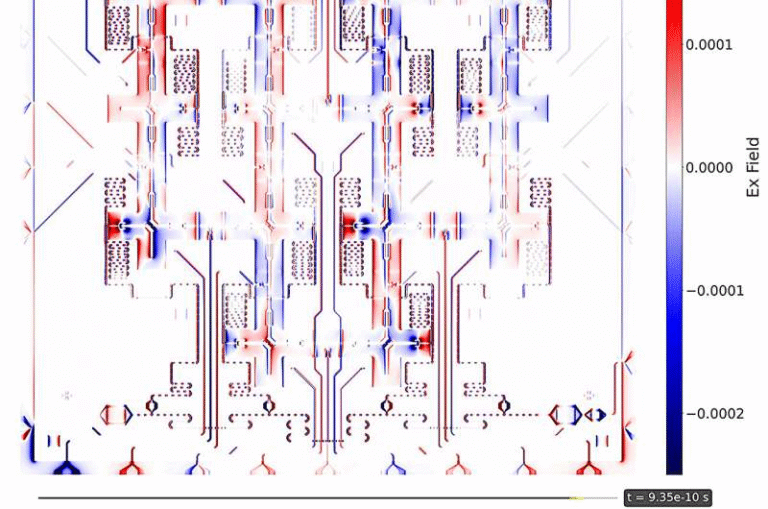Entanglement May Not Prove That Gravity Is Quantum After All, Says New Study

For decades, physicists have been chasing one of the biggest puzzles in science — how to unify quantum mechanics and gravity. Every other fundamental force — electromagnetism, the strong force, and the weak force — fits neatly into the quantum framework. Gravity, however, stubbornly refuses to join the club. Despite countless attempts, a full theory of quantum gravity remains out of reach.

One popular idea to bridge this gap has been to test whether gravity can create entanglement — that mysterious quantum link between particles where the state of one instantly affects the other, no matter the distance. If gravity could entangle two massive objects, many believed it would be solid proof that gravity itself must be quantum in nature.
But a new study published in Nature challenges that assumption. The research, led by Joseph Aziz and Richard Howl, argues that entanglement alone doesn’t prove gravity is quantum. In fact, they claim that even classical gravity, when paired with quantum field theory (QFT) for matter, can produce entanglement under certain conditions.
This finding complicates years of thought experiments, including a famous one proposed by Richard Feynman in 1957. Let’s unpack what this means — and why it might reshape how we think about the quantum nature of gravity.
The Background: Why Physicists Thought Entanglement Could Reveal Quantum Gravity
Richard Feynman, the legendary physicist, proposed a thought experiment to test whether gravity is quantum. Imagine two tiny masses, each placed in a quantum superposition — meaning they exist in two positions at once. If the only way they interact is through their mutual gravitational pull, and they become entangled, that would seem to suggest gravity must also follow quantum rules.
This reasoning became the foundation for several modern proposals, often called gravitationally induced entanglement (GIE) experiments. These tabletop tests, being developed by research groups around the world, aim to directly observe gravity creating entanglement between small masses — something never seen before.
The logic was simple:
- If gravity is classical, it can only send classical information between objects. In quantum information terms, that’s known as LOCC (Local Operations and Classical Communication).
- LOCC channels cannot produce entanglement.
- Therefore, if two systems become entangled through gravity, the interaction must involve quantum communication, which implies that gravity is a quantum field.
That’s been the accepted view — until now.
The New Study: When Classical Gravity Meets Quantum Fields
Aziz and Howl re-examined this idea using quantum field theory (QFT), the modern framework describing how matter behaves at the most fundamental level. QFT treats particles not as standalone dots but as excitations of underlying quantum fields.
In their analysis, they kept gravity classical — meaning spacetime curvature isn’t quantized, and no “gravitons” are assumed — but treated matter with full QFT rigor.
Their calculations revealed something surprising: even in a purely classical gravitational theory, entanglement can emerge between two quantum systems.
How? The key lies in virtual matter propagators — the invisible interactions between quantum fields that transmit effects even when no real particles are exchanged. These propagators, the authors found, can act as mediators that transfer quantum information through a classical gravitational field.
In other words, gravity itself doesn’t need to be quantum to create entanglement — the quantum fields of matter interacting through gravity can do it.
This finding directly challenges the assumption that only quantum gravity can generate entanglement.
Understanding the Core Argument
Previous theorems that ruled out classical gravity as a source of entanglement assumed that matter was described by non-relativistic quantum mechanics, not quantum field theory. Aziz and Howl argue that this simplification ignored key processes that occur naturally in QFT.
When you use QFT instead, the situation changes. The gravitational field couples to the energy-momentum tensor of the matter fields. These fields, through their virtual interactions, can produce entanglement even if the gravitational field itself carries only classical information.
The authors showed that such entanglement arises without violating causality or relativity, meaning it doesn’t require faster-than-light signaling or unphysical behavior. The interactions remain local, but quantum effects sneak in through the matter fields.
The implication is that entanglement alone is not an unambiguous indicator of quantum gravity. Both quantum and classical gravity (when combined with QFT) can lead to similar outcomes — but with different strengths depending on experimental parameters like mass, separation, and interaction time.
What This Means for Experiments
So does this mean Feynman’s dream experiment is pointless? Not quite.
Aziz and Howl’s work doesn’t make gravitational entanglement tests useless — it just makes them more subtle. The authors note that while both classical and quantum gravity can generate entanglement, the magnitude and scaling of the effect differ between the two cases.
That means future experiments could still tell the difference — but only if they’re precise enough to measure those small distinctions.
For instance, the amount of entanglement predicted by quantum gravity depends differently on the masses of the objects, their distance apart, and how long the gravitational interaction lasts, compared to the classical-gravity-plus-QFT scenario. By exploring a wide range of parameters, researchers might still be able to distinguish the two.
In other words, entanglement is still a useful tool, but it’s not the silver bullet many hoped it would be.

The Ongoing Debate: Critics Respond
The paper sparked immediate discussion. A separate commentary by physicists Chiara Marletto and Vlatko Vedral argues that Aziz and Howl’s analysis misrepresents what counts as “classical mediation.”
They claim that if entanglement arises through direct coupling between the quantum systems — as can happen in the QFT framework — then it’s not truly mediated by gravity alone. In their view, such models don’t qualify as examples of local classical communication, which the original entanglement tests are designed to probe.
Their rebuttal, titled “Classical Gravity Cannot Mediate Entanglement by Local Means”, emphasizes that the core logic of the original entanglement test still holds if we strictly enforce locality — meaning no hidden direct connections between the systems other than gravity itself.
So, the debate is ongoing: Aziz and Howl have broadened the discussion by showing that quantum matter and classical gravity can entangle, while others insist that under stricter definitions, such entanglement doesn’t count as being gravitationally mediated in the intended sense.
Either way, this exchange highlights how subtle and conceptually tricky testing gravity’s quantum nature can be.
Why This Matters for the Quest for Quantum Gravity
Physicists have been trying to merge quantum mechanics and general relativity for nearly a century. The two theories work beautifully in their own domains but clash when combined.
- Quantum mechanics rules the microscopic world, describing electrons, photons, and atoms.
- General relativity governs the cosmic scale, explaining how matter curves spacetime and produces gravity.
At extreme conditions, like inside black holes or during the Big Bang, both sets of rules should apply simultaneously — yet they don’t fit together mathematically.
That’s why even a small experimental clue about whether gravity behaves quantum-mechanically is so valuable. The proposed gravitational entanglement tests — involving levitated nanospheres or interferometers operating near the limits of sensitivity — are among the few potentially feasible ways to probe this question in the lab.
Aziz and Howl’s study doesn’t close that door, but it warns that researchers must carefully account for classical pathways to entanglement. Ignoring them could lead to false conclusions.
Digging Deeper: What Are Virtual Propagators and Why Do They Matter?
In quantum field theory, every interaction between particles can be thought of as an exchange of virtual particles — temporary disturbances in the fields that don’t exist long enough to be directly detected but still influence outcomes.
For example, in quantum electrodynamics (QED), charged particles interact by exchanging virtual photons.
Aziz and Howl’s model suggests that virtual matter propagators — essentially, field fluctuations involving the matter fields themselves — can transmit quantum correlations even through a classical gravitational background.
This is a major conceptual twist: it shows that the boundary between classical and quantum is not as clean as previously assumed. Classical gravity can still “carry” quantum effects indirectly, because it couples to matter fields that are inherently quantum.
That’s why the study concludes that entanglement can emerge in classical theories, provided those theories interact with fully quantum matter.
Where Do We Go from Here?
The implications of this work are both exciting and challenging.
- Experimental challenges:
- Measuring gravitational entanglement is already extremely difficult. The masses involved must be small enough to exist in quantum superpositions yet large enough for gravity to matter.
- Adding the need to distinguish between classical and quantum entanglement channels raises the bar even higher.
- Theoretical opportunities:
- This study encourages new hybrid models of semi-classical gravity (where gravity remains classical but matter is quantum).
- It opens the door to studying how quantum information flows in such mixed frameworks — something that could have implications for cosmology and black hole physics.
- Philosophical implications:
- If entanglement doesn’t necessarily imply quantum gravity, then perhaps quantumness is not the defining property of all forces.
- Alternatively, this could just mean our definitions of “classical” and “quantum” need refining — especially in contexts where both coexist.
Final Thoughts
Aziz and Howl’s paper doesn’t tear down the dream of proving gravity’s quantum nature. Instead, it adds a crucial layer of realism. It reminds us that nature often refuses to fit neatly into our categories, and that even the simplest-seeming tests can hide deep subtleties.
In the coming years, as experimentalists push forward with ultra-sensitive gravitational entanglement tests, studies like this one will help guide how we interpret what we see. Whether gravity turns out to be truly quantum or not, the journey of exploring these questions continues to reveal how wonderfully strange the universe really is.
Research reference:
Joseph Aziz et al., Classical theories of gravity produce entanglement, Nature (2025). DOI: 10.1038/s41586-025-09595-7





